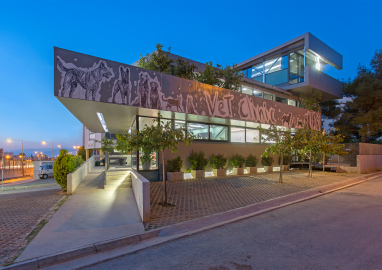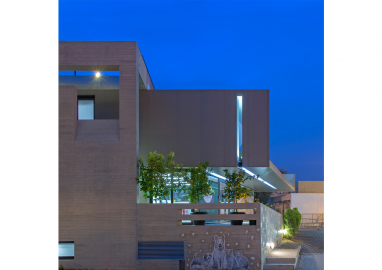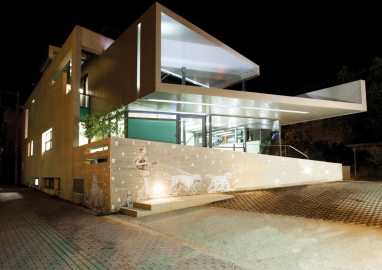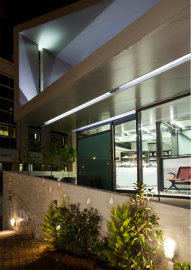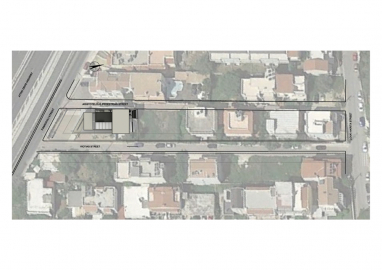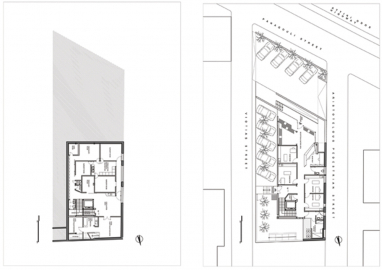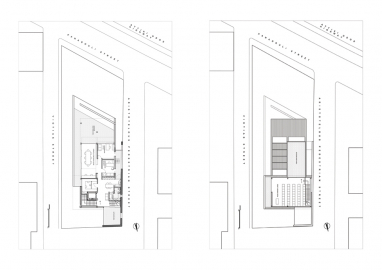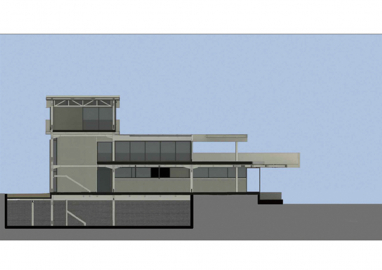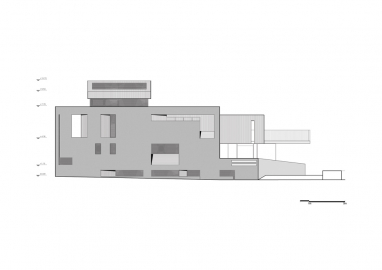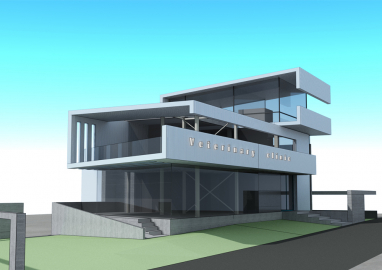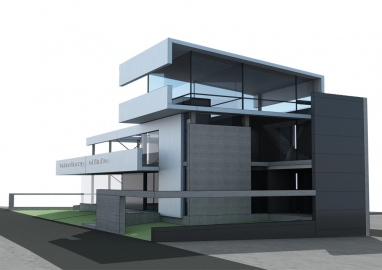Veterinary Clinic in Aghia Paraskevi
Plakentia Veterinary Clinic covers a peculiar function since it offers almost all the facilities of a small hospital accommodating pets as patients along with their owners as clients.At the same time, it succeeds by its simple yet interesting form to be easily noticed by the passerby while construction, maintenance and cleaning costs have been kept low.
The building sits on a 483m² plot. Its facilities cover a total surface area of 503m² and specifically:
• 150m² on the ground level including:
- Reception, secretariat and waiting areas (separate for dogs and cats).
- Four exam rooms directly accessed from the waiting area.
- Sleeping quarters and office for the on-call (after hours) veterinarian.
- Restrooms and cleaning closet.
• 180m² at the basement level including:
- The surgical sector that includes rooms for preparation, sterilization, endoscopy, surgery.
- Radiology room.
- Hospitalization sector with separate wards for dogs and cats.
- Storage rooms and electromechanical rooms.
• 118m² on the 1st floor including:
- Veterinarian offices.
- Microbiology and biochemical lab.
- Library and meeting-conference room.
- Staff changing room, restroom, staff kitchenette.
- Open and sheltered outdoor rest areas
• 55m² on the 2nd floor where an event and seminar room for 45 people is placed along with 30m² outdoor area.
The building’s construction line on the narrow, Aristotelous street, coincides with the plot’s limit. This side, that is mostly exposed to the north-north western, being also very close to the opposite buildings, was implemented by a compact and relatively closed concrete wall 8.00m high. This wall, that turns and becomes lower at the front emphasizing the entrance, forms a vertical surface from which a more extroverted steel construction projects, open to the south and the view.
The study was assigned at the beginning of the Greek economic crisis. The building was originally designed to meet a requirement of 700m² with facilities for four collaborating veterinarian doctors. The client then asked for a 30% decrease of the clinic program. The flexibility of the building’s steel construction design and the ability to cut and paste parts of the already finished structural and architectural study made this easier.
The clinic is located in a dense urban residential area, close to a highway and metro station. It is required to incorporate in the scale of the urban fabric but as a commercial building should project a dynamic form. Disturbance from the clinic’s operation should be kept low. An open parking area is provided at the free areas of the plot. Animal wards were placed in the basement and sound absorption and insulation materials were used.
To prevent the spread of infections, all the critical rooms in the basement (surgical sector , wards, e.t.c) are supplied with excessive treated fresh air to maintain positive air pressure. The overground floors have large glass sliding doors and due to the mild climate, outdoor areas are created.
Apart from the concrete basement and L shaped wall the building consists of a steel structure that supports composite slabs.
Double sided thermally insulated metallic panels cover the rest of the steel frame, a method applied usually in industrial buildings. Here is being implemented in a way that forms a surface which takes role of shelter, floor, wall, parapet and roof, defining closed and open areas and keeping the cladding cost low. Low-e treated glass covers the remaining surfaces. These materials nearly eliminate the shell’s maintenance needs. Natural light is controlled by blinds, curtains, tents. Plasterboard walls or framed panels are used for internal partitioning.
VRF systems are used for air conditioning to minimize electrical consumption along with solar collectors for hot water production. Most of the materials can be recycled after the building completes its life circle.
Without fence or security measures, graffiti paintings appeared. To prevent uncontrolled expansion, a graffiti artist was hired to make paintings relative to the clinic’s object as the main signage thus contributing to the building’s integration in the neighborhood.


